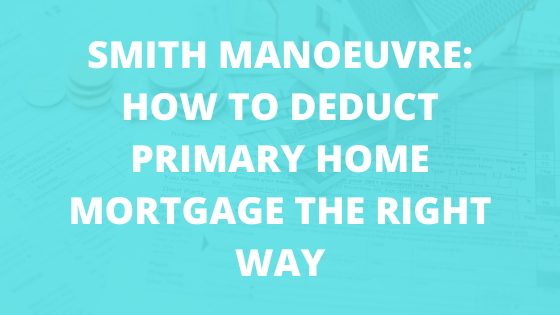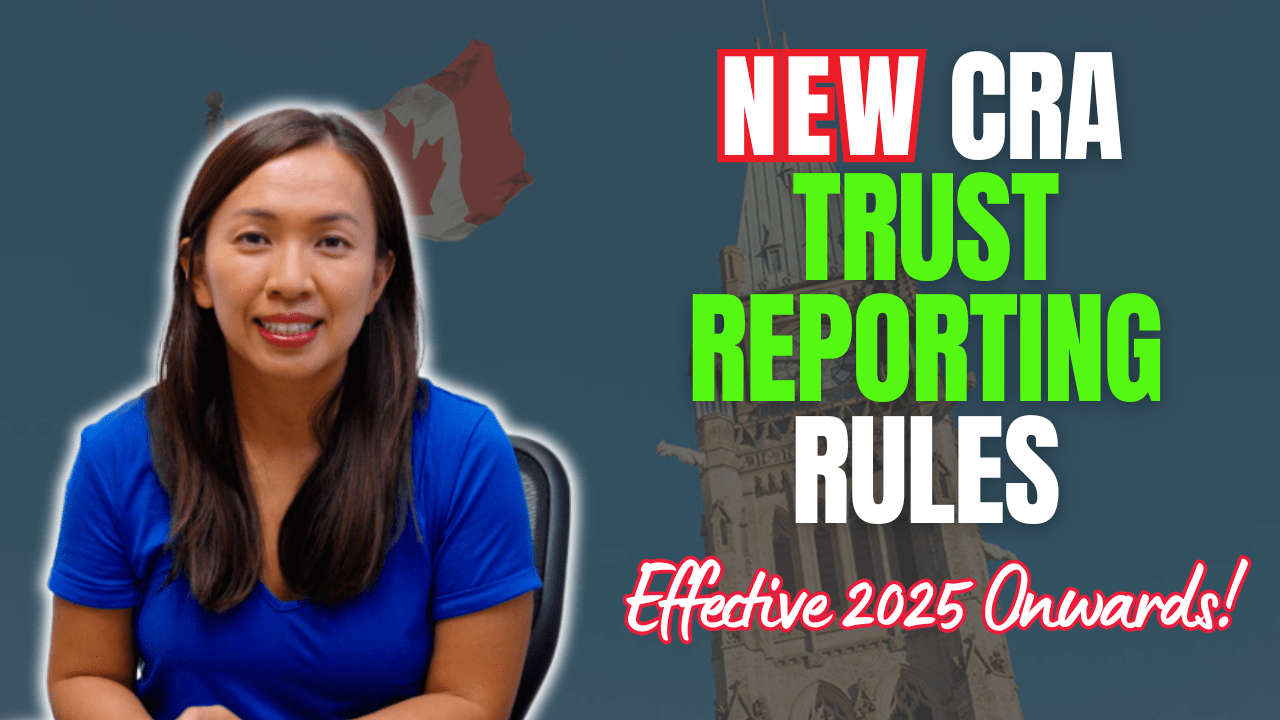A couple of clients recently asked us about Smith Manoeuvre, I would use today’s post to share with you how it’s done and how it can increase your tax deduction.

Step 1: Get a re-advanceable mortgage on your primary residence/personal used properties
The key here is to start with a re-advanceable mortgage. A re-advanceable mortgage is a mortgage that allows you to increase the home equity line of credit as you pay down your mortgage.
As you pay your monthly mortgage payment, your line of credit availability increases.
You can now BORROW MORE from your line of credit.
If you borrow from this line of credit to invest in stock or buy an investment property, the interest on the borrowed fund is tax deductible.
Step 2: Use your after-tax earnings/extra saving to pay down your home mortgage
Generally speaking, your primary residence mortgage interest isn’t tax deductible.
If you have extra cash available for investment immediately, you can first use your extra cash to pay off your primary mortgage, which in turn increases the line of credit available for investment.
Step 3: Use the extra line of credit available to invest in stock and real estate
You borrow against your line of credit to buy a house or invest in the stock market.
Interest from your line of credit is now tax deductible.
Word of caution though – if you borrow to invest in TFSA, RRSP and any registered account, chances are, the interest would not be tax deductible.
The investment you use your line of credit to make must be outside of a registered account.
Step 4: Keep up your paperwork for year-end tax deduction
If you use the extra cash/saving to invest, your primary home mortgage interest would not be tax deductible.
By transferring cash the proper way and taking advantage of what is available from the mortgage terms, you are now making your primary home mortgage interest tax deductible.
Like I said all the time to my clients, in Canada, you need to “earn your deduction”.
Earning your deduction means that you have to keep track of your paperwork, all the transfer slips, deposit details to ensure that you can prove that the funds from your line of credit is used for investment purposes.
Make sure you keep the documents until you fully repay the loan.
Step 5: Rinse and repeat
You can rinse and repeat with your savings – turning your non-deductible primary home interest to deductible investment interest.
Commonly asked questions
1 . Line of credit interest is usually higher than my mortgage interest. Wouldn’t it be beneficial to pay less interest?
It depends on your marginal tax rate.
Marginal tax in Ontario can be as high as 53.5%.
If we round it down to 50% for ease of calculation.
50% tax rate means that if you get to write off your mortgage, you save taxes for approximately 50% of the interest cost.
Your deductible interest cost x 50% tax must be greater than the difference between your mortgage interest and your line of credit interest.
Even if the numbers don’t work out, which is unlikely, you can also restructure your line of credit into a low fixed interest rate mortgage. I’ve heard mortgage rates as low as 1.89% these days. 😉
2 . My mortgage term ended. My banker suggested that I should combine my mortgage and line of credit as one lump sum mortgage. Can I still deduct the interest against my investment?
Absolutely. All you need is to keep all your initial documentation, your paperwork to combine the line of credit with mortgage, until you eventually stop deducting the interest cost.
Remember, paperwork is the key.
Just because CRA says that you are required to keep 7 years of documents do not always mean that you don’t need to keep certain paperwork for longer.
3 . If I combine my primary home mortgage with my line of credit that I use for investment purposes into one giant mortgage, how do I know how much interest I can deduct?
The balance outstanding on the line of credit at the time when you combine it with your home mortgage matters.
Say, at the time when you combine the two, you owe $100K on your LOC and you used the entire LOC for investment purposes. And you also owe about $200K on your home mortgage.
The new mortgage balance is $300K.
1/3 of the interest expense would be tax deductible
= 100,000 (LOC balance before the new mortgage is formed) / 300,000 (new combined mortgage balance x Interest expense
Until next time, happy Canadian Real Estate Investing.
Cherry Chan, CPA, CA
Your Real Estate Accountant






Robinson Smith
Hi Cherry. Thank you for your article on The Smith Manoeuvre. You may be interested in the SMCP Accreditation Program – https://smithmanoeuvre.com/find-or-become-a-smith-manoeuvre-certified-professional/. Keep up the good work!
cindy chen
Hi Cherry how are you? Our primary home is under my husband’s name. Can I use the LOC money of our primary home to purchase a rental property which is to be under my name, and then claim tax deduction of the LOC interest? What if the rental property is under a number company which is owned 100% by myself, can I deduct the LOC interest from rental income? Thank you!
Cindy